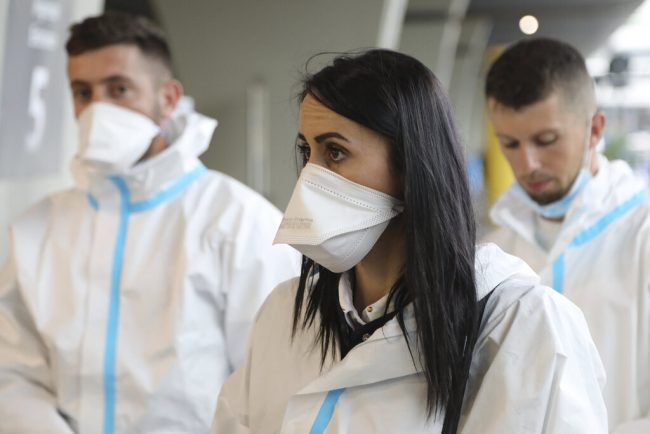|
Getting your Trinity Audio player ready...
|

There is a reason it seems as though news about coronavirus variants is plentiful. SARS-CoV-2, the virus that causes COVID-19, constantly mutates, leading to new strains, reports the Centers for Disease Control and Prevention (CDC). On June 10, 2021, the agency explained the importance of recognizing the potential development of new variants and tracking the strain’s circulation geographically.
The agency uses genomic surveillance to accomplish this task. This monitoring involves interpreting the order of the nucleotide molecules that map out any virus’s genetic code. COVID-19 contains a string of approximately 30,000 nucleotides. Every time the virus multiplies, it loses its integrity, resulting in errors in the basic structure of the virus’s DNA. These evolutionary changes are mutations.
New variants “have the potential to affect the transmission, disease severity, diagnostic, therapeutics, and natural and vaccine-induced immunity,” according to the CDC. During the beginning of the pandemic, the  United States was overwhelmed with COVID-19 cases. The agency was not prepared to keep up with the demand for testing, which hampered health officials to know how many individuals contracted the virus. Since there was a lack of details, they were forced to respond without knowing COVID-19’s characteristics, such as the rate it spread between people and what could be done to minimize the risk of infections.
United States was overwhelmed with COVID-19 cases. The agency was not prepared to keep up with the demand for testing, which hampered health officials to know how many individuals contracted the virus. Since there was a lack of details, they were forced to respond without knowing COVID-19’s characteristics, such as the rate it spread between people and what could be done to minimize the risk of infections.
In November 2020, the CDC established and rapidly expanded national surveillance for variants of the virus that causes COVID-19. Since sequences might be generated by multiple laboratories and sequence availability varies geographically, the CDC developed methods to generate population-based estimates of variants circulating nationwide and in different U.S. regions.
Using this model, the report determined that by late April 2021, variant B.1.1.7 made up 66 percent of COVID-19 cases. Variant P.1 increased extensively between December 20, 2020, to May 6, 2021.
During the two-week period ending April 24, most infections were of the B.1.1.7 and 5 percent P.1 variants, both of which concern the CDC. The agency will continue genomic surveillance for the potential of increased transmission to identify the emergence of these and other potential variants in the United States.
Written by Cathy Milne-Ware
Sources:
The Conversation: Genomic surveillance: What it is and why we need more of it to track coronavirus variants and help end the COVID-19 pandemic; Alexander Sundermann, Lee Harrison, and Vaughn Cooper
CDC: COVID-19 Genomic Surveillance
Featured and Top Image Courtesy of Dipartimento Protezione Civile’s Flickr Page – Creative Commons License
Inset Image Courtesy of dmbosstone’s Flickr Page – Creative Commons License



